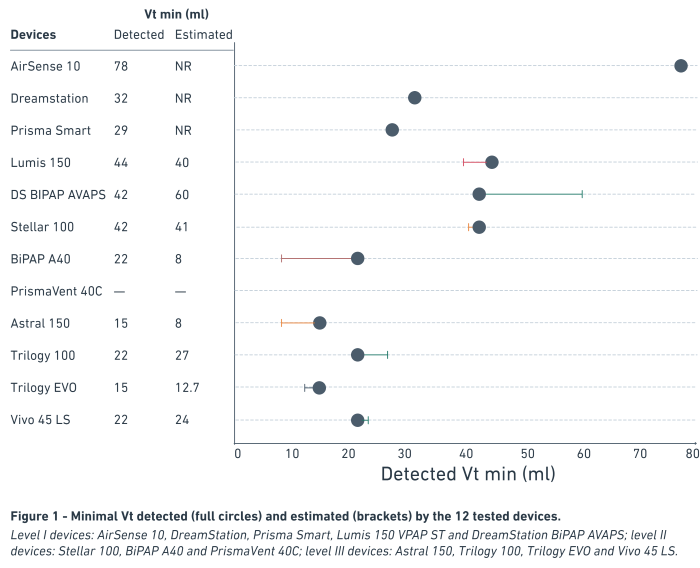Abstract
Aims and objectives: An adequate choice of the continuous positive airway pressure (CPAP) or noninvasive ventilation (NIV) device, according to the manufacturer weight recommendations, should guarantee accurate built-in software data in children. However, this is not always observed in clinical practice. We hypothesized that the detection of patient?s breathing may be expressed as a minimal tidal volume (Vtmin). Our aim was to estimate the Vtmin detected by home ventilators on CPAP mode.
Methods: Twelve devices were analysed on a bench test. Paediatric profiles were simulated with increasing Vt values in order to determine the detected Vtmin. The duration of CPAP use and the availability of built-in software data were also gathered.
Results: Vtmin varied widely, independently of the device category (Fig.1). The duration of CPAP use was underestimated in level I devices, which did not display any waveform, or only intermittently, until Vtmin was reached. The duration of CPAP use was overestimated for the level II and III devices, with the display of various waveforms, according to the device, as soon as it was switched on.
Conclusion: Based on the Vtmin detected, several level I and II devices may be suitable for children <10 kg. A careful testing of the device should however be done at CPAP initiation, with a checking of the built-in software data. Manufacturers might supplement their recommendations with data based on patient?s breathing detection.
